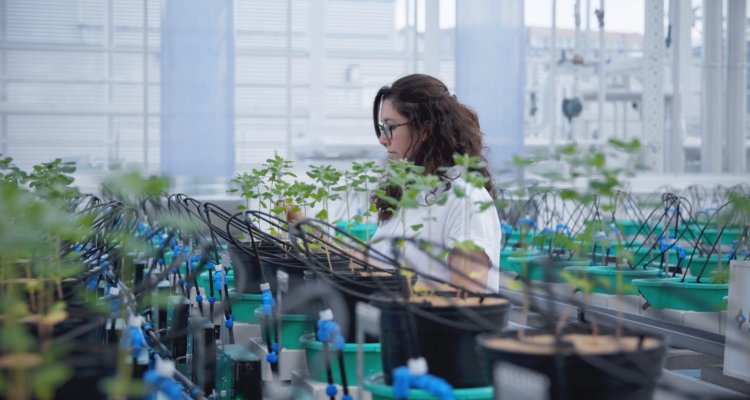
News
Debate about ownership of gene-editing techniques; researchers suggest solutions
New breeding and gene-editing techniques, such as CRISPR-Cas, are accelerating and fine-tuning the development of crops with traits such as greater resilience to disease and extreme weather conditions. Improved varieties are essential for the production of sustainable and nutritious food. However, existing European legislation with regard to these techniques is over 20 years old and no longer fit for purpose. New legislation is in the pipeline, but the debate about the ownership of these techniques is causing delays. In a recently published scientific article, researchers at Wageningen University & Research offered some possible solutions.
In the European Union, new breeding techniques, or new genomic techniques (NGTs), are currently covered by the 2001 GMO Directive. The European Commission has concluded that the current directive is no longer fit for purpose and in the summer of 2023, it came up with a proposal for an amended directive for plant varieties created using NGTs. This proposal led to a new discussion on how to protect innovation in plant breeding. A large majority of the European Parliament voted not to allow patents on plants developed with NGTs. There have also been motions in the Dutch House of Representatives not to allow patents on NGT crops (Parliamentary Paper 36410-XIV-81 and Parliamentary Paper 36410-XIV-85).
In a recently published scientific article, researchers at Wageningen University & Research discussed two types of ownership rights in plant breeding: plant breeders’ rights for varieties, and patent rights on inventions. The article also considered the extent to which these systems can help or hinder access for breeders and growers to new varieties developed using NGTs.
Plant breeders’ rights
Plant breeders’ rights were designed specifically to protect new plant varieties. Anyone growing a new variety pays a licence fee to whoever holds the plant breeders’ rights for that variety, which can be for 20 or 25 years. However, even if a particular variety is covered by plant breeders’ rights, any breeder can continue crossing and breeding with that variety to produce a new one. This is known as the Breeder’s Exemption.
Patent rights
Patents provide a general system for protecting industrial inventions. They offer 20 years of protection. For plants, patents can be applied to methods for creating new traits, for example, or more efficient ways of combining those traits. A licence is required if you want to use a patented plant in a new breeding process. It’s not the plant itself that is protected; rather, it’s the method of using an innovative trait found in the plant.* A Breeder's Exemption also applies for this at the European level, but it’s limited: breeders may use the material in breeding programmes, but placing any resulting new variety on the market requires a licence if the patented modification is still present.
Both of these ownership systems have advantages and disadvantages. Proponents of patents believe they are necessary to generate sufficient income after investing in the development of innovative traits or methods. If everyone could use your new trait in further breeding and place the resulting product on the market, not many licences would be bought.
Proponents of plant breeders’ rights argue that this system provides sufficient protection to generate enough income through the sale of new seed or plant varieties. However, the new techniques are speeding up the development of varieties with new traits. If these traits aren’t protected, then under the system of plant breeders’ rights new varieties could potentially come onto the market so quickly that there wouldn’t be enough time for individual varieties to generate an income.
It takes many more years to develop a new variety for some crops than it does for others, and the enduring appeal of successful varieties can also be very different depending on the crop. For example, apple breeding takes 20 years, which means plant breeders’ rights are sufficient.
Under the plant breeders’ rights system, income could be increased by introducing a delay: breeders could be prevented from immediately using a new variety for further breeding, or there might be a 5-year delay before any such product could be put on the market. Under the patent system, on the other hand, a full breeder’s exemption could be put in place, which would avoid breeders having to deal with expensive, renegotiable licences at the end of the breeding process.
Patent proponents argue that the patents themselves are not the problem, but that the main issue is overpriced licences or the fact that some licences turn out not to be available for sale at all. The industry has therefore already introduced initiatives to create ‘patent pools’, or licensing platforms, designed to make it easier to obtain a licence at a reasonable price.
Conclusions
The researchers draw several conclusions, the key ones being:
1. The debate about patents in plant breeding should be conducted separately from the NGT proposal, as it’s a topic that goes beyond new breeding techniques.
2. A patent on a trait produced through NGTs should not block the use of natural genetic variation in breeding.
3. There are different interests involved in intellectual property rights for plants depending on the stakeholder: the breeder who owns the new NGT variety, the breeder who wants to pursue further breeding using that variety, and the growers who want to grow a variety that suits their business and the market they produce for. Both plant breeders’ rights and patent law could be adapted to safeguard these different interests.
*Natural traits cannot be patented in Europe, but patenting the use of specific DNA markers around the trait can have a similar effect.